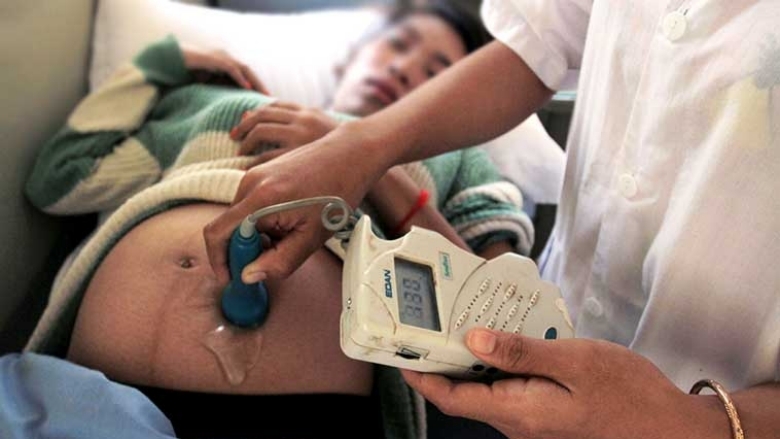Challenge
Despite recent dramatic improvements in maternal and child health, Cambodia still has great inequities in health outcomes based on socio-economic status and between rural and urban populations.
In 2014, child mortality was 76 deaths per 1,000 live births for the poorest quintile of the population – sharply higher than 19 in the wealthiest quintile. Child malnutrition remains high and in 2014, 32% of children under five – or about 500,000 children – were stunted. Non-communicable diseases are a growing burden due to an aging population and life style changes.
Many hospitals and health facilities around the country were destroyed during the conflict period that lasted more than 30 years. The government has been taking steps to reconstruct and revitalize public health system with the assistance of donors and NGOs.
Cambodia needed to increase health service accessibility for the poor as well as help provide reliable funding to finance health facilities. In addition it wanted to improve child nutrition.
Approach
The Second Health Sector Support Program Project (HSSP2) for Cambodia is designed to assist with the implementation of the government's 2008-2015 health strategic plan. The project, which was launched in 2009 and builds on the first Health Sector Support Project, aims to improve coverage and quality of health care services by expanding the health facility network, supplying medical equipment and financing technical and institutional capacity improvement.
It also finances health outreach activities in remote and difficult to access areas. The HSSP2 co-financed and scaled up innovative, performance-based health financing mechanisms such as the Health Equity Funds, which subsidize costs of health services for the poor, and the Service Delivery Grants, which leverage the improvement of health facility management, staff attendance and the coverage of health services.
Results
- A new hospital facility in Preah Vihear province is a symbol of the incredible change over the last 20 years in Cambodia’s health care system. The once ill-equipped, leaky hospital had a major upgrade and officially opened in 2013. Patients living in rural areas can now get the modern medical care that they need without traveling far or trying to come up with money that they don’t have. Today, 16 Makara is the largest hospital in Preah Vihear. It has modern equipment and is staffed with adequate nurses, doctors and medical specialists.
- Nationwide, 85% of babies were delivered by trained personnel by the end of 2015, compared to 58% in 2008. 80% of babies were delivered by trained personnel at health facilities by the end of 2015, up from 39% in 2008.
- 94% of children under one in Cambodia were vaccinated for diphtheria, pertussis, tetanus and hepatitis (DPT-HepB3) at the end of 2015, compared to 84% at the end of 2010.
- 100% of the country’s poor population – approximately 3 million people – is covered by Health Equity Funds as of the end of 2015, up sharply from the 57% covered at the end of 2008.
- By the end of 2015, the health equity fund enabled access to a defined package of health, nutrition or reproductive services for more than 8.46 million visits to a health facility for medical care.
- Under the HSSP2, a provincial hospital, the National Laboratory for Drug Quality Control, two regional medical training centers, 121 health centers and five health posts, and 79 additional delivery rooms, 15 maternity wards, one pharmacy store were constructed. HSSP2 also supported for improving water quality, electricity and sanitation in 280 health centers, and the establishment of 12 non-communicable disease clinics.
